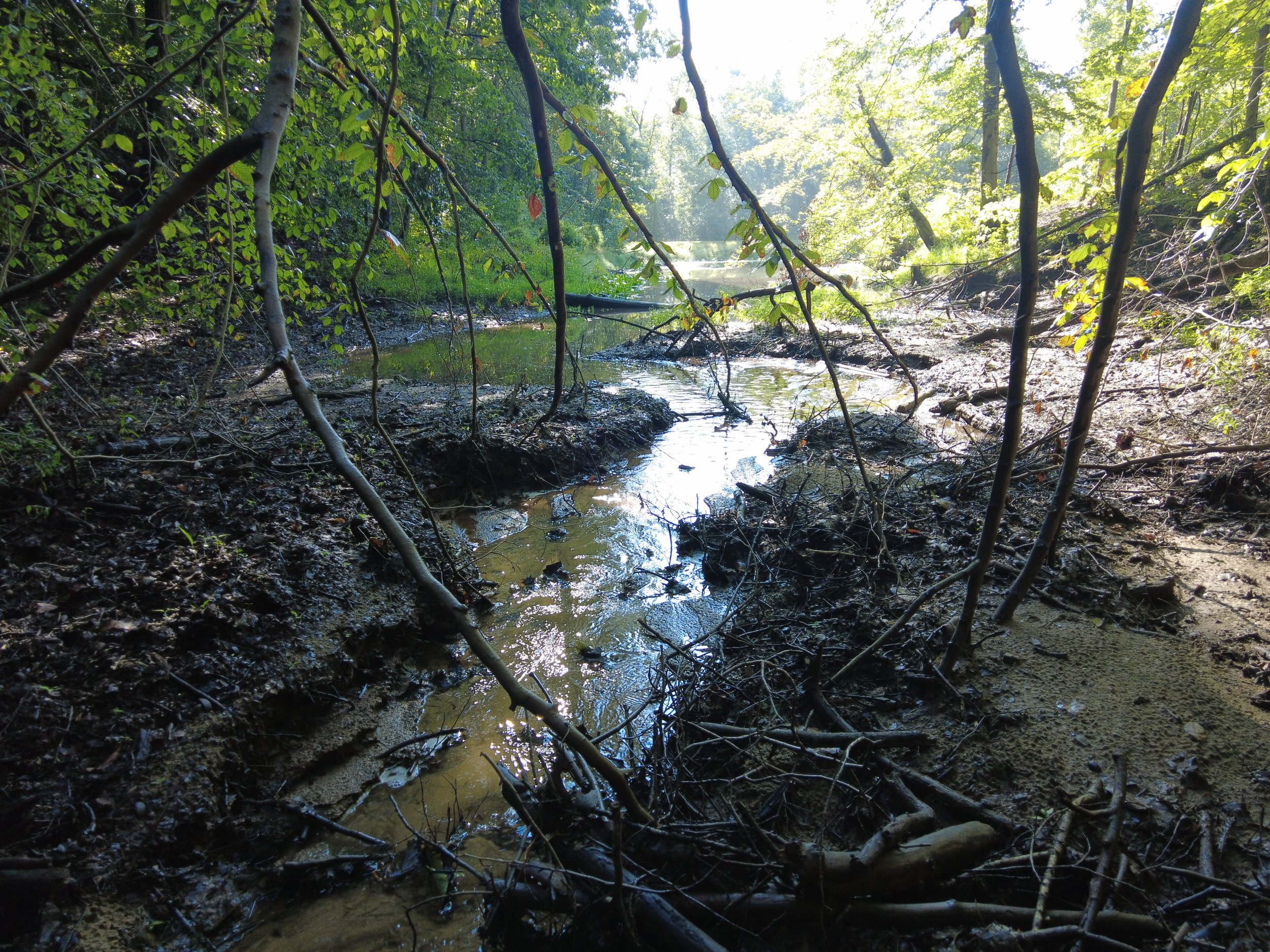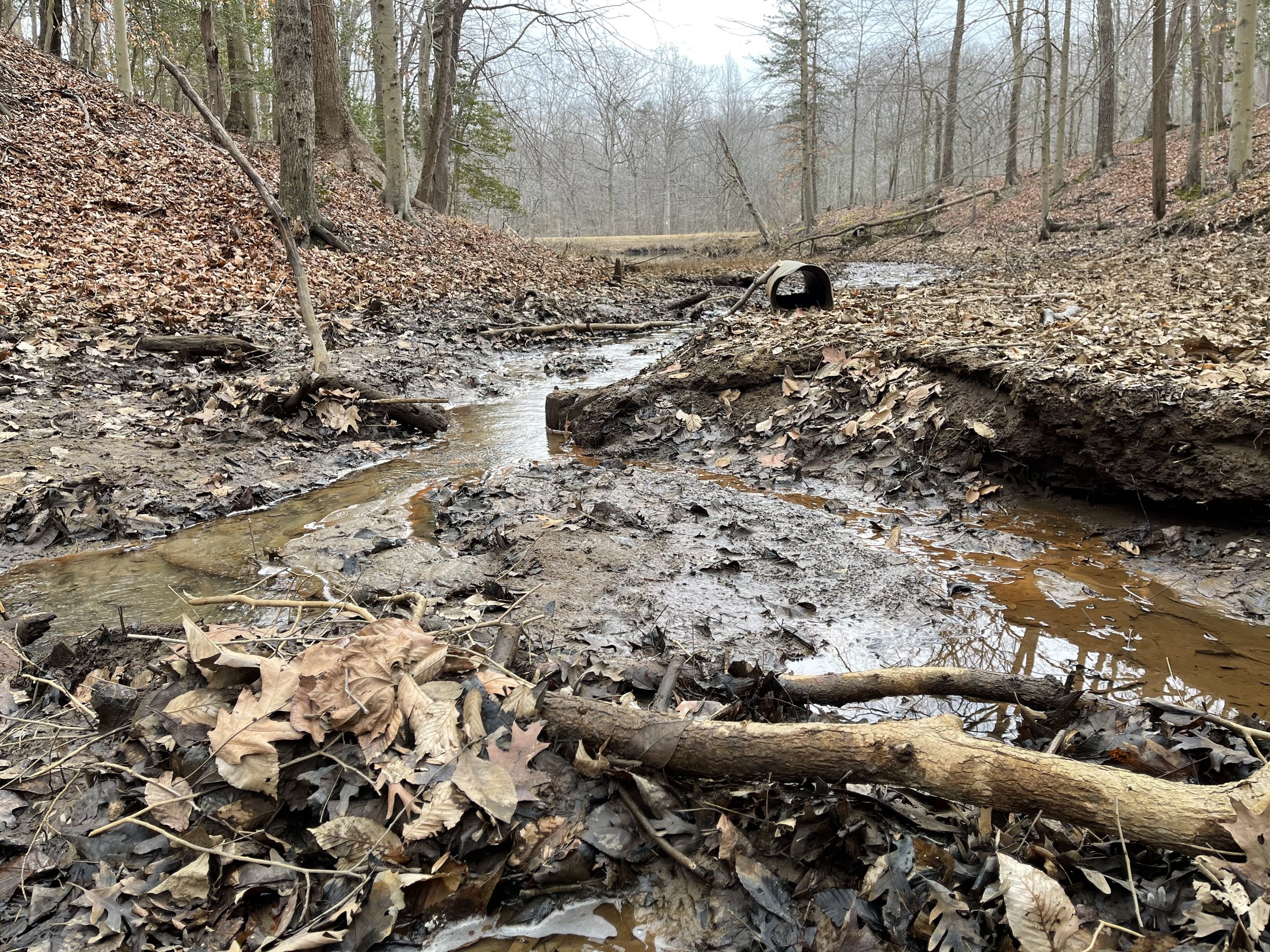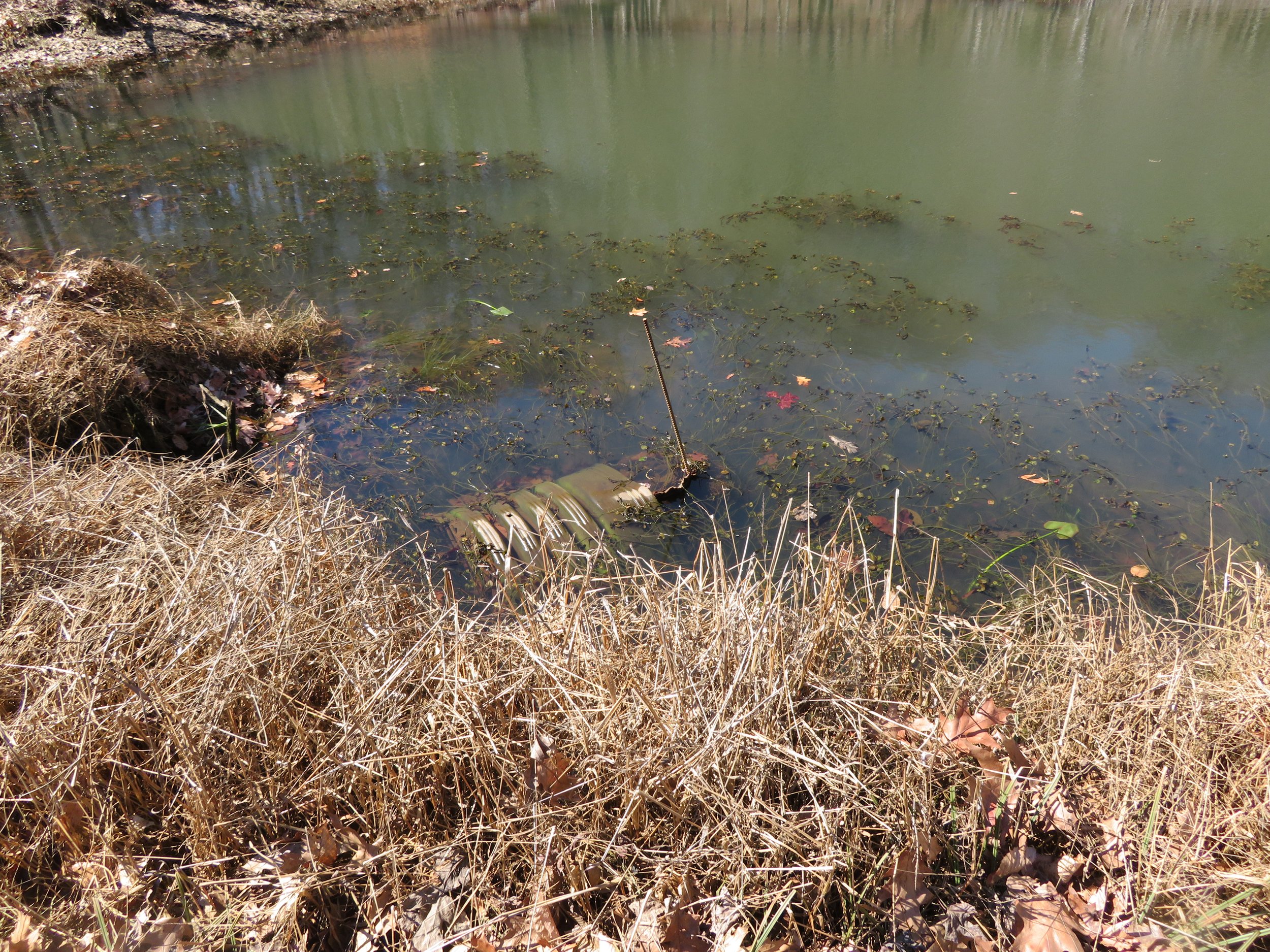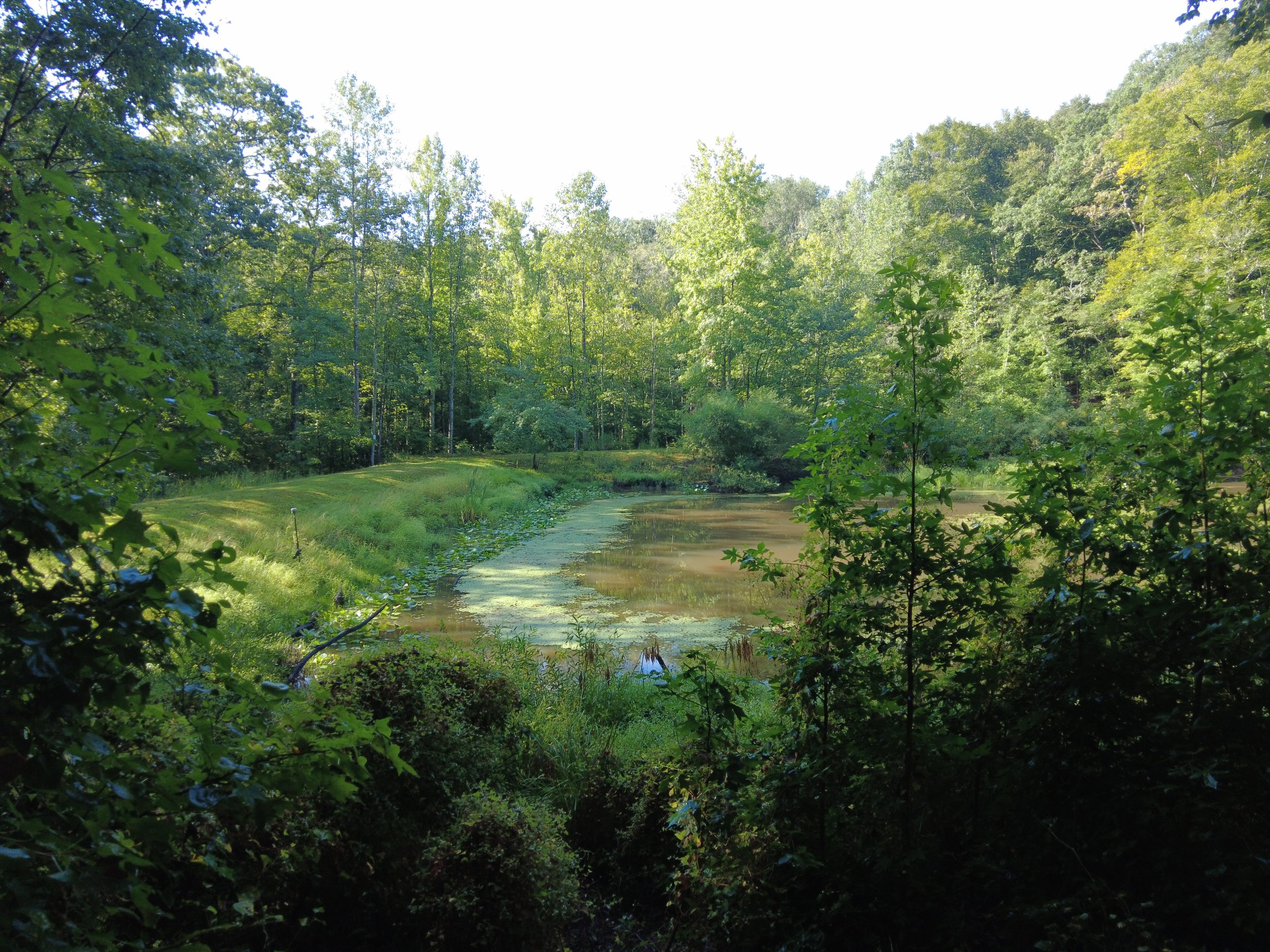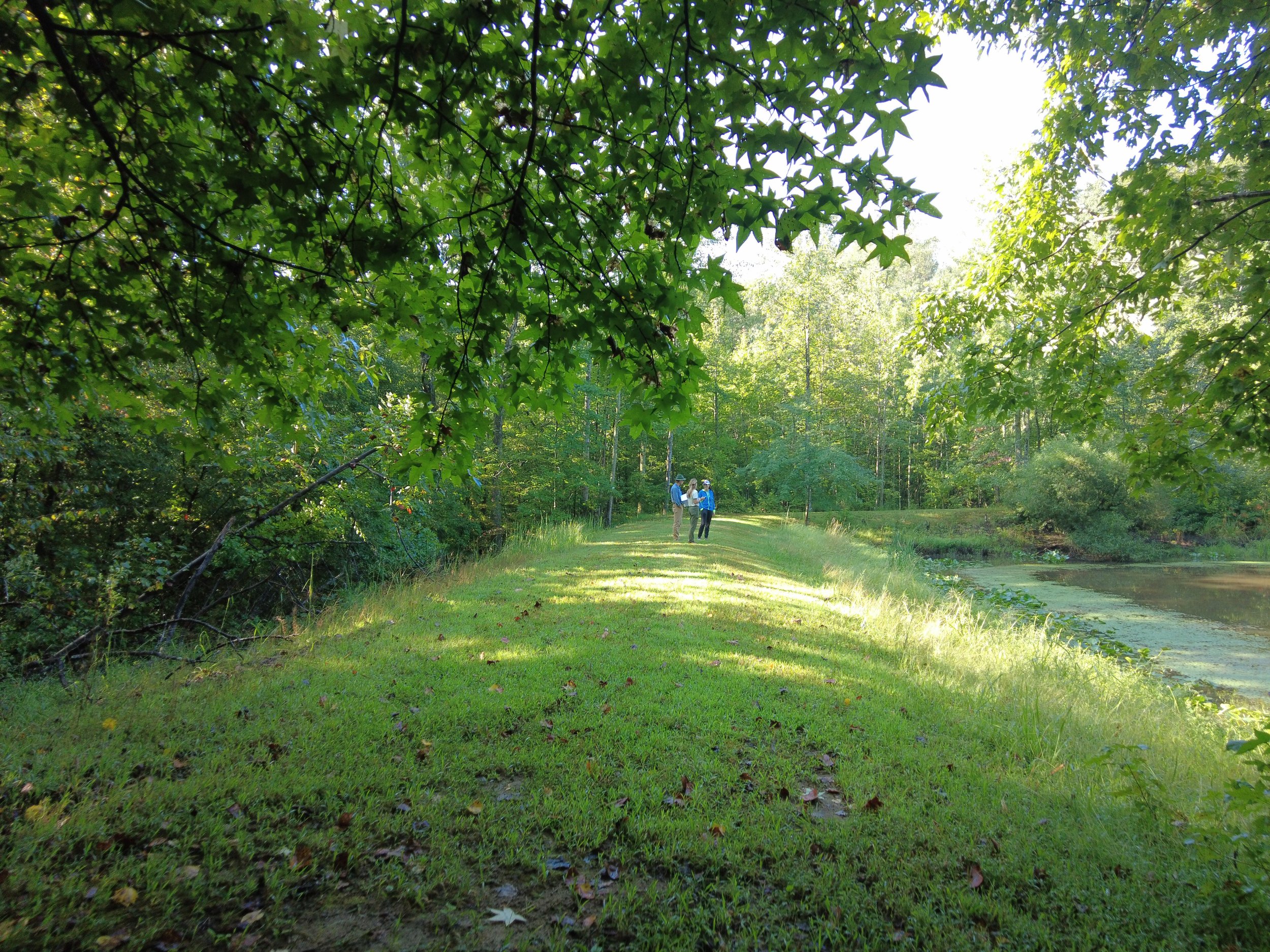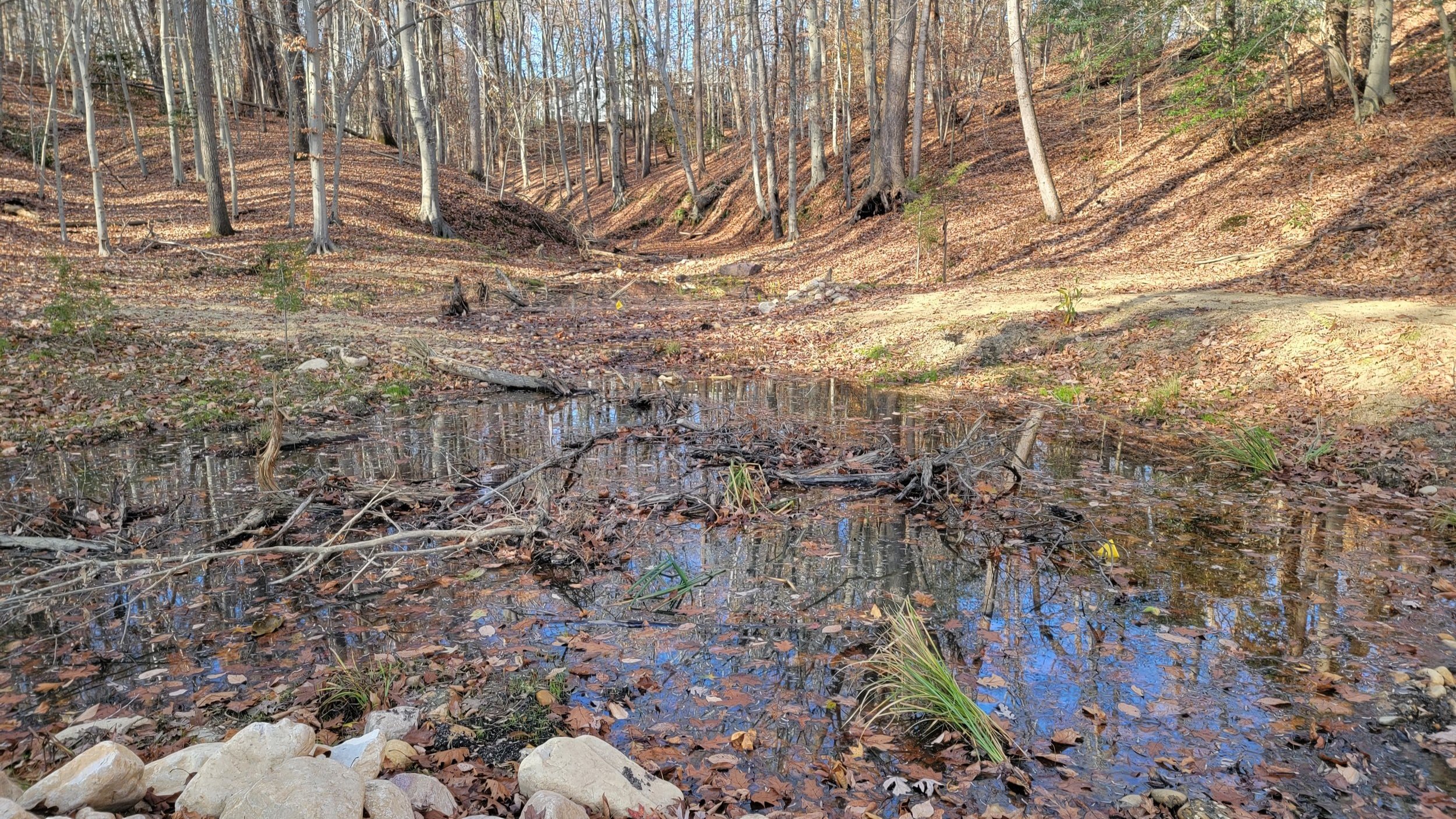Transitioning into the 21st century:
How to handle 20th century stormwater problems with regenerative solutions underpinned by habitat and ecosystem uplift
Construction of the Belvoir Project : Fall of 2022
Belvoir
In the Community of Belvoir Farms a 1970’s dammed pond was approaching the end of its useful life. The pond was located on community open space and was part of the David’s Run watershed that feeds tidal Hopkins Creek on the Severn River.
A comprehensive restoration project transitioned the dam into a Regenerative Stream Channel (RSC), which provides for greater nutrient processing as well as better connection to the floodplain and wetlands below the project site. The project creates abundant integrated stream and wetland habitat, as well as supports wildlife.
History be “dammed”
The Belvoir pond was initially constructed for farm purposes prior to the 1980’s subdivision of Belvoir Farms. It did not meet current requirements for stormwater management.
Three major outfalls located above the former farm pond have pipes that direct stormwater runoff into the ravines that feed into the pond area. Head cutting in the ravines was accelerating and created a source for sediment downstream.
In an attempt to slow down and filter sediment from the pond outflow, a riser and a vertical pipe had been installed. However, the corrugated pipes were corroding. Proactively, the Belvoir Farms Homeowners Association engaged a qualified engineering firm for a strategy to repair or replace the dam.
The conventional engineering approach recommended was to replace the aging risers, dig out the dam, and recreate the same piped technology that was originally advocated in the mid 20th century. The community then sought a more environmentally proactive approach and reached out to the Severn Riverkeeper Program to discuss alternatives that are more in line with the community’s desire to advance environmental stewardship on community land. The County Department of Public Works encouraged this approach.
Before
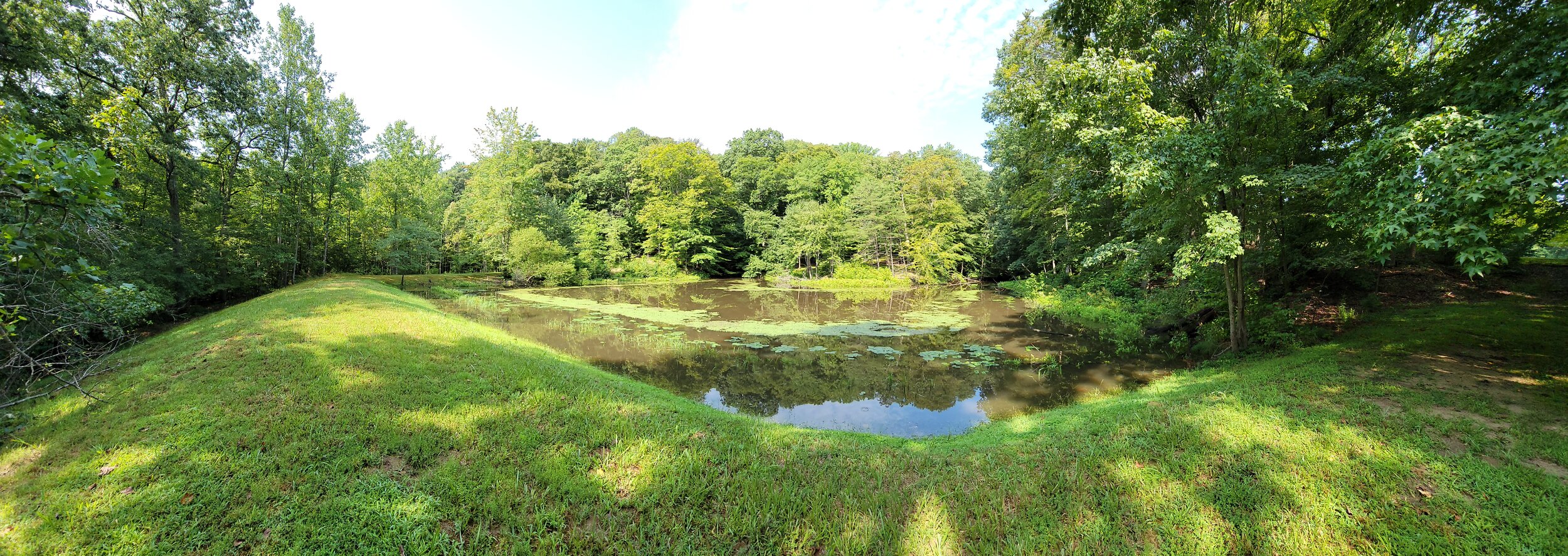
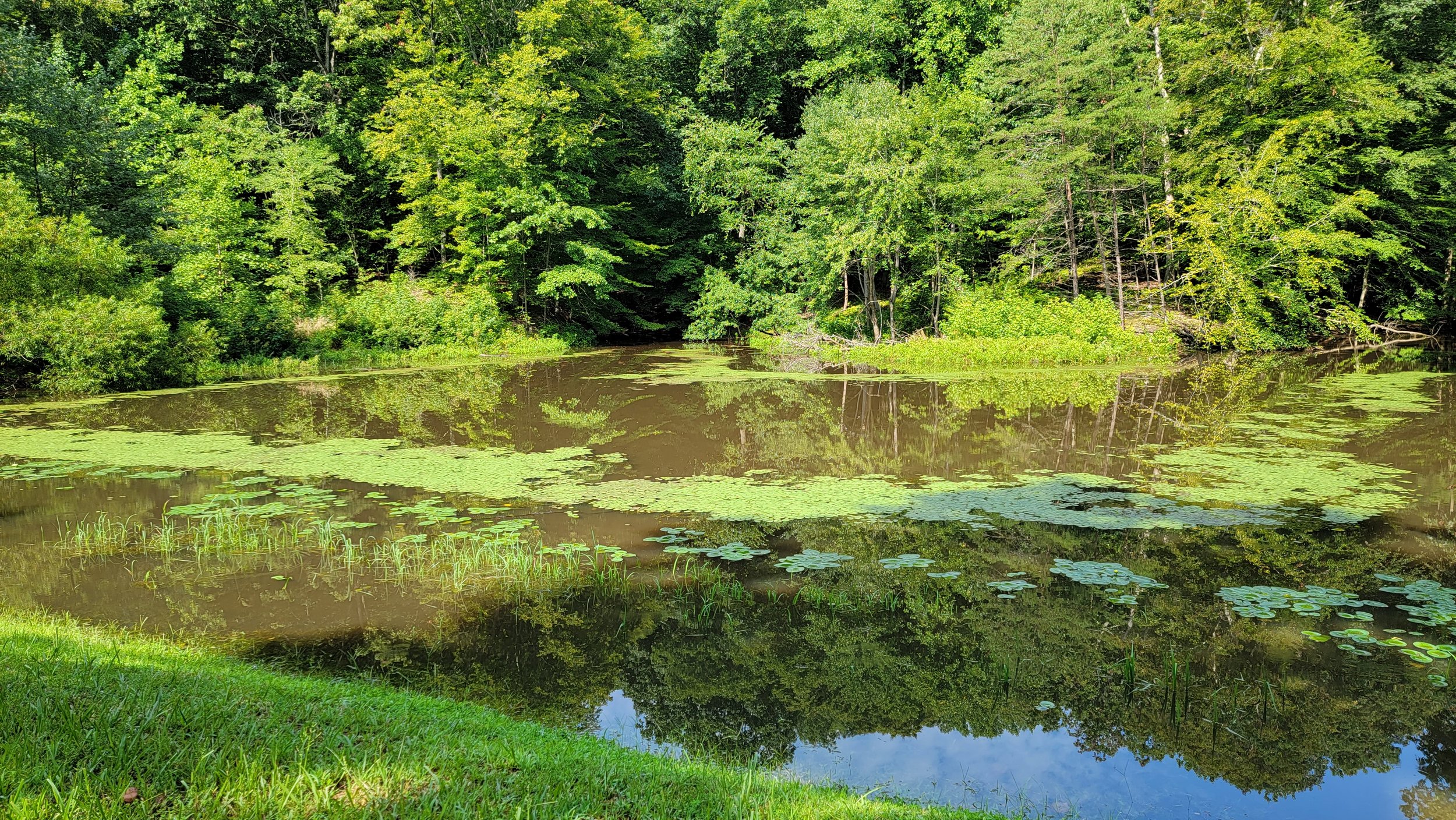
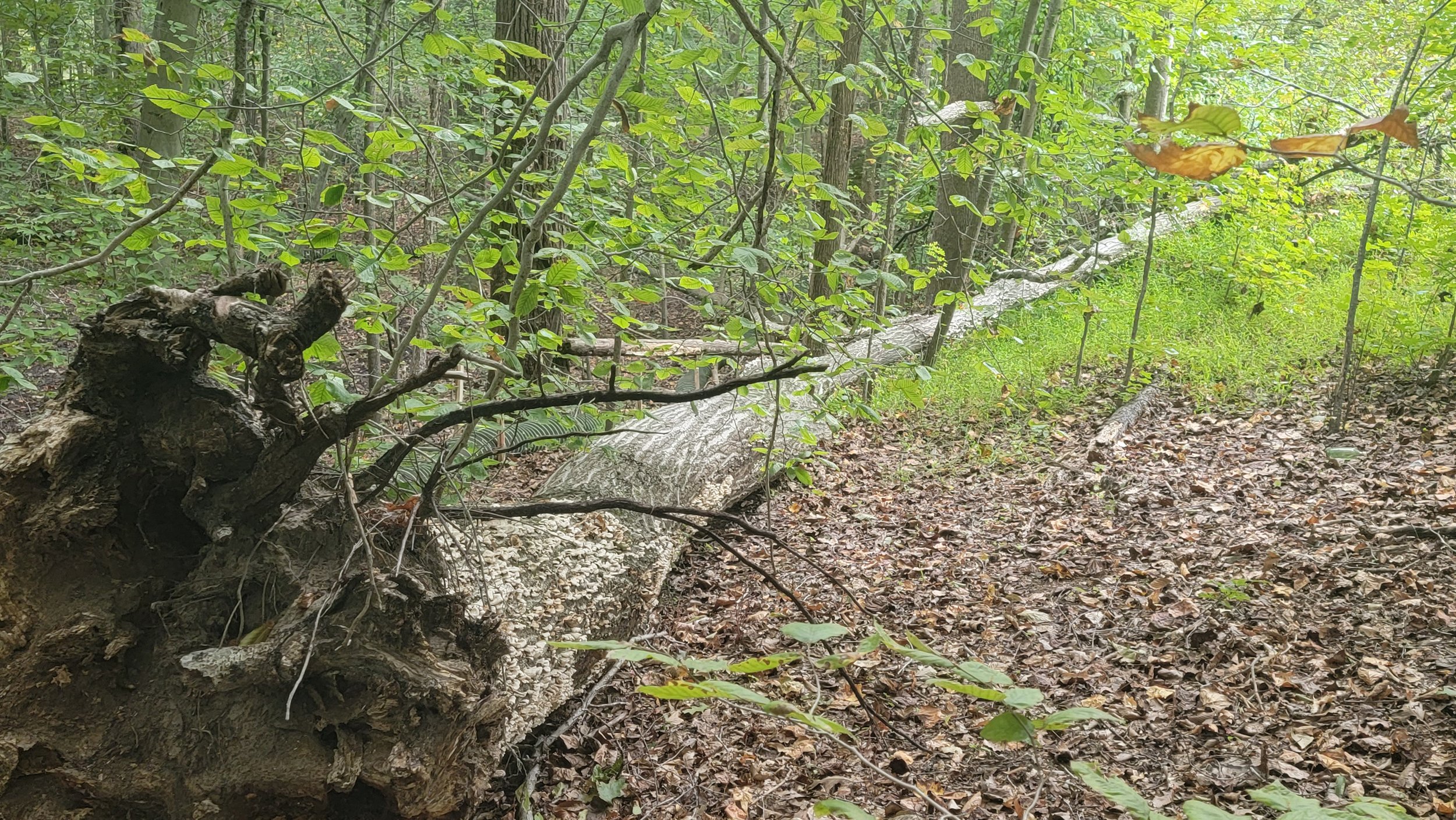
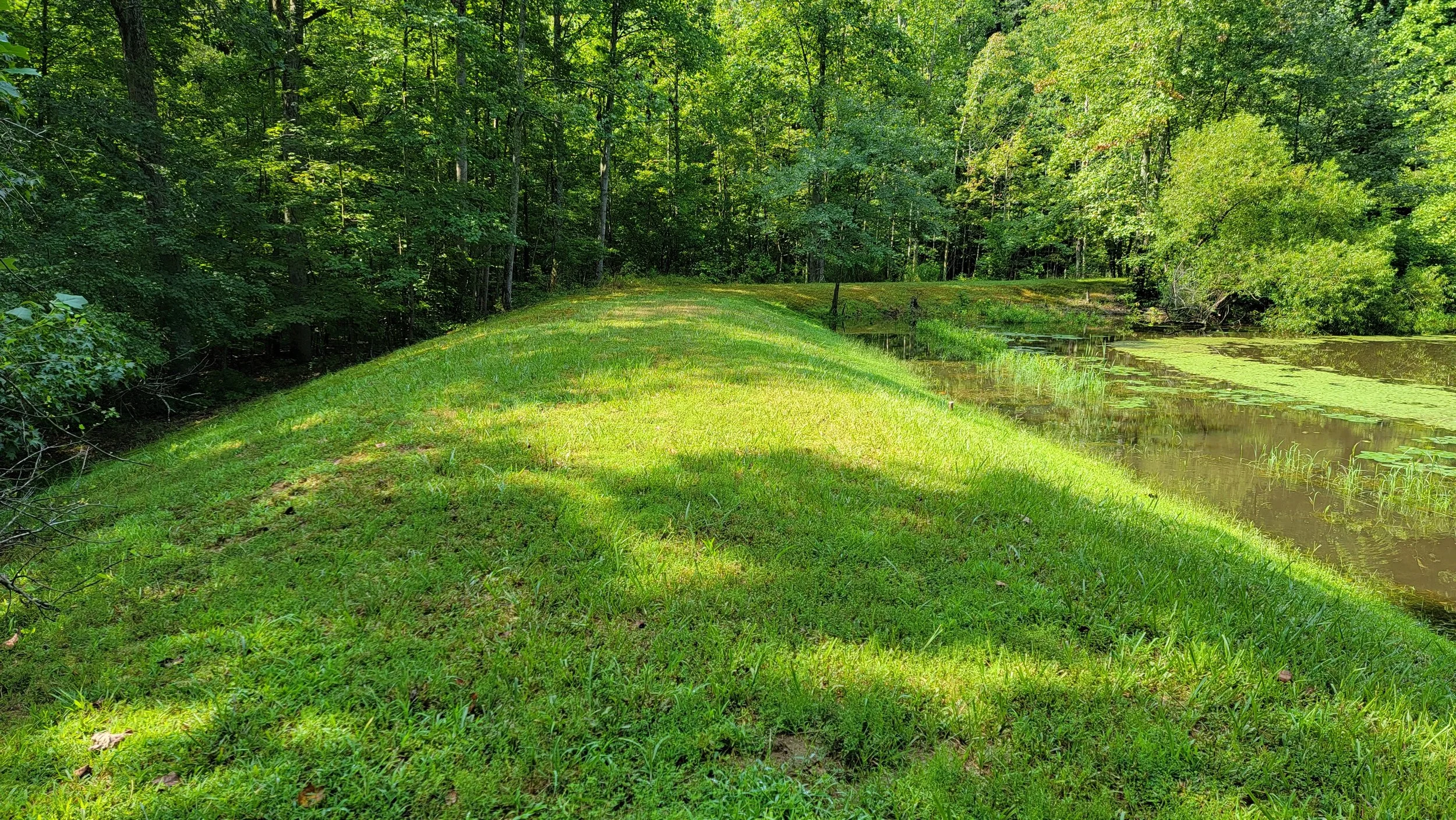
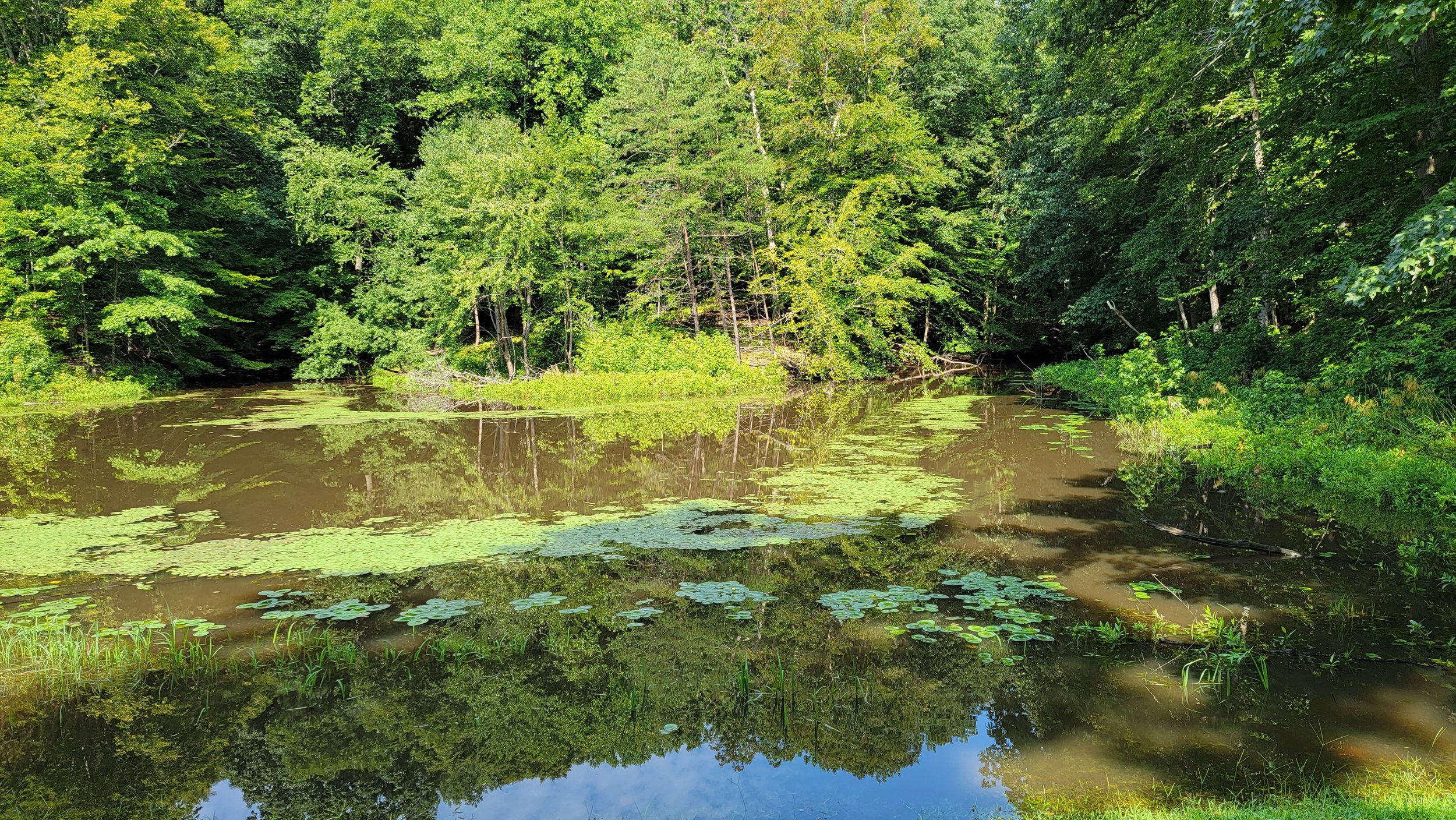
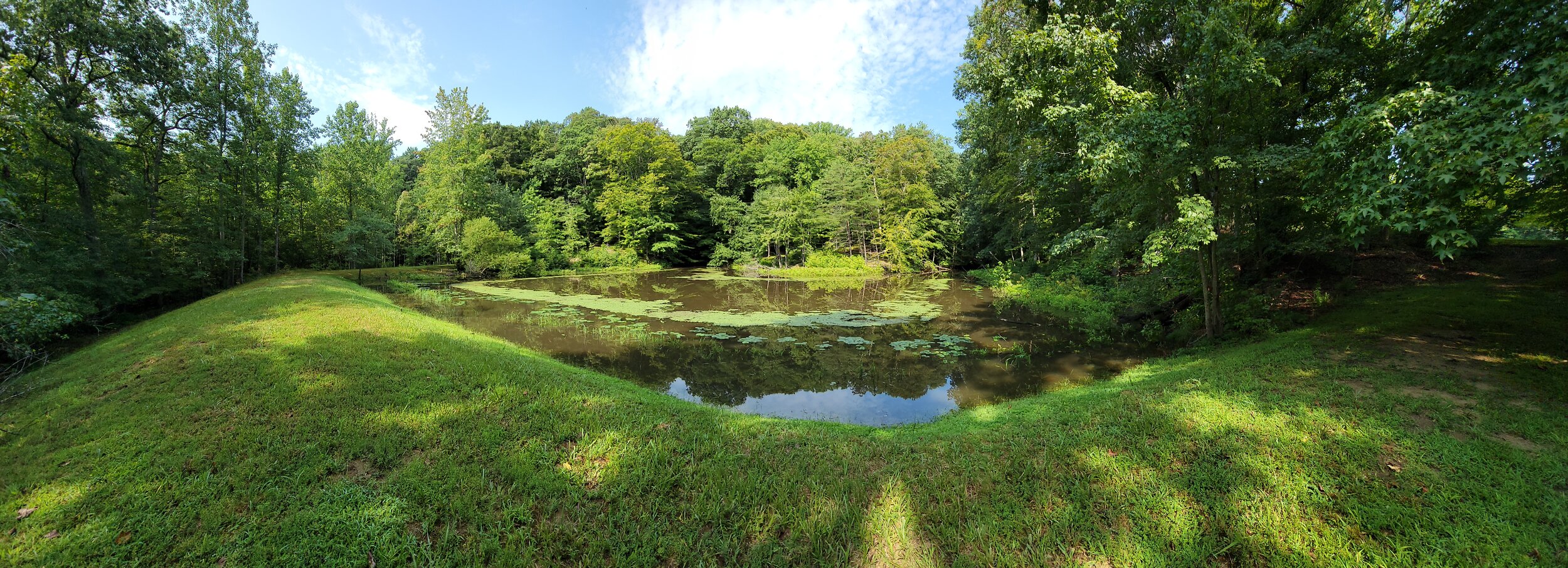

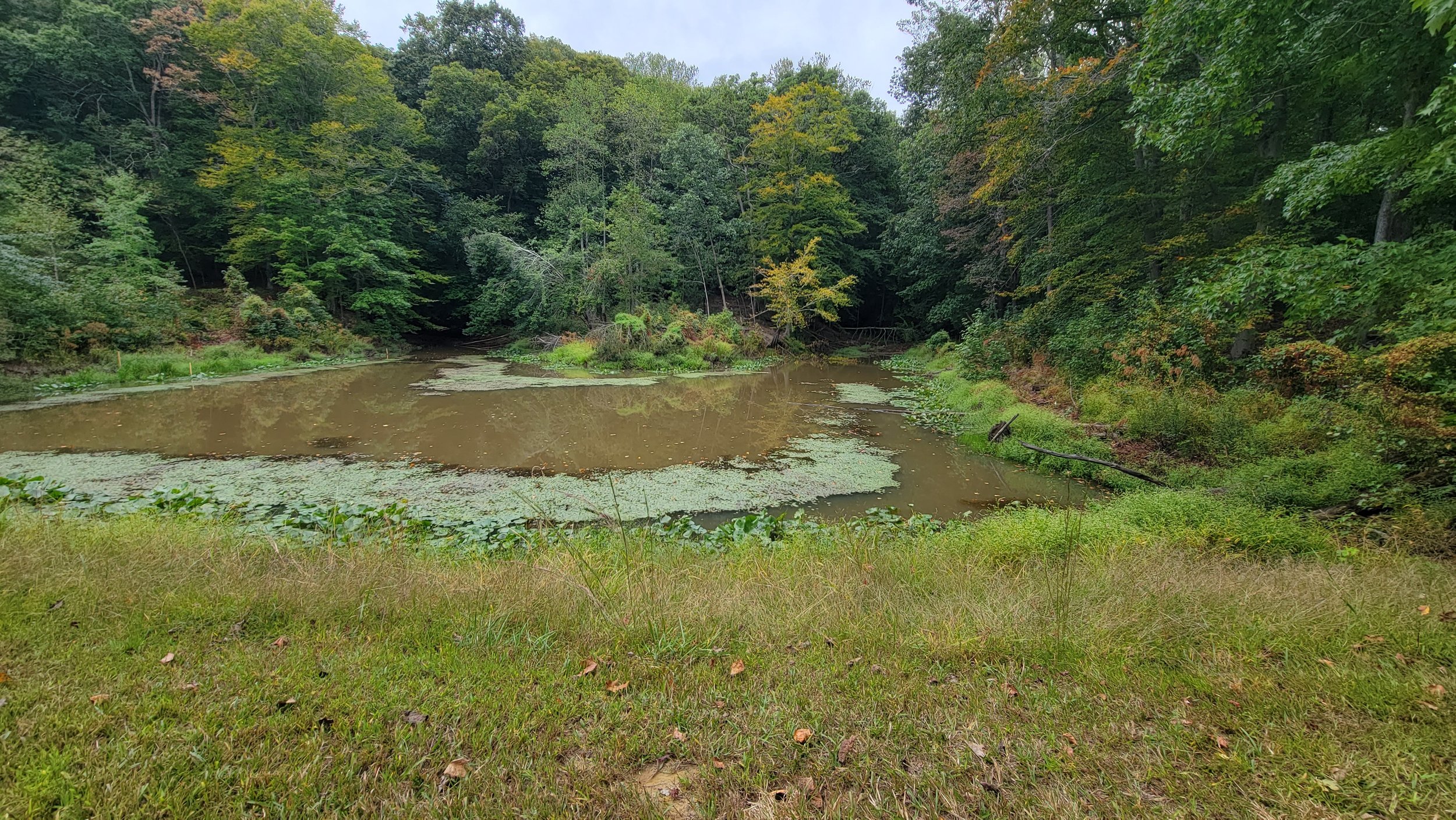
Building Partnerships: Creating the design and finding funding.
Thank you to the multiple funders that made this most recently completely Severn Restoration project possible:
Chesapeake Bay Trust and the Watershed Restoration Grant Funds made available by the Bureau of Watershed Protection and Restoration of Anne Arundel County
Chesapeake and Atlantic Coastal Bays Trust Fund and the Department of Natural Resources
Anne Arundel County Forestry and Forested Land Protection
National Fish and Wildlife Foundation Small Watershed Grant Program
The Community of Belvoir Farms
Construction Begins
The outdated dam technology was replaced with the environmentally preferred Regenerative Stream Channel (RSC) system that can withstand up to the 100-year storm.
RSC uses a series of sand-bedded pools and cobble riffles to provide stable conveyance for stream flow and encourages the exchange of surface water and ground water to remove pollutants. It releases flow as sheet flow, a marked improvement over the concentrated discharge point at the downstream end of the piped outflow that created an eroded channel through the downstream wetland. RSC pools and cascades were also used to interrupt the serious head cutting that occurred in the ravines that feed the pond system.
Belvoir : Conceptual Design
Annually the project will remove 297 lbs of nitrogen, over 2.5 lbs of phosphorus, and 5,000 tons of total suspended sediments.
Allowing flood waters to stage on the landscape integrates the aquatic, wetland, and upland habitats that occur naturally in undisturbed landscapes and represents the new conventional wisdom for high quality riparian and aquatic restoration and flood control.
A New Beginning
Post Construction and Planting
International Interest
Severn Riverkeeper recently had the pleasure of continuing our ongoing international exchange with the Nation of Japan when an esteemed delegation of leaders visited Maryland. This trip was facilitated by the Smithsonian Environmental Research Center (SERC) and the ecosystem restoration firm Underwood & Associates. The ecological restoration collaboration between Japan and Maryland has been germinating for many years.
Dr. Komatsu, President of the Ecosystem Research Institute of Japan, connected with Severn Riverkeeper on his numerous Maryland trips to see nature-based solutions in action. Dr. Komatsu is pursuing research on using holistic restoration techniques that mimic nature to solve environmental problems, and we have had the honor of showing him some of our restoration projects. As nature-based solutions gain footholds in Japan, Dr. Komatsu recognized the need to introduce a wider audience to these methods.
In May 2023, he brought an entire delegation from Japan with him. Members of the honored Japanese delegation included high-ranking political leaders of Japan’s National Diet (including the former Minister of the Environment), scientists, professors, and members of the Japanese embassy. Representatives from Japan toured the Belvoir Pond Restoration site in December 2022 during construction, and re-visited the site during their late spring visit. It is very valuable to see a restoration project both during construction and after the final planting to gain a deeper understanding of how ecosystem restoration projects are brought to life.
Nature-based solutions (NBS) are not only gaining traction in Maryland and across the United States, they are gaining worldwide attention. Opportunities abound for collaboration, sharing knowledge, and wandering through wetlands together.
Partnerships
There is nothing easy about pulling together the necessary funding for a project of this scale. The reality is that seldom only one source will or can come forth individually to fully fund a worthy restoration project.
It takes dedication and tenacity on the part of a community steward/leader and a group such as the Severn Riverkeeper Program who will stand by a project over the course of multiple years in order to make it happen. In this case, the community of Belvoir Farms had strong leadership in its Executive Committee who tirelessly worked to help formulate the need and work within their community to achieve consensus. Severn Riverkeeper brought in the various funding partners and identified the appropriate design/build contractor (Underwood and Associates) with the technical expertise to create the appropriate nature based regenerative solution for this restoration.
SRK staff wrote the grants, solicited the letters of support and coordinated the design process. The Community stepped up with upfront funds for the concept design and later to fund portions of the planting and future plant maintenance.
It took several application cycles to the Maryland Department of Natural Resources Chesapeake and Coastal Bays Trust Fund and the Anne Arundel County Bureau of Watershed Protection Watershed Restoration Grant (administered by the Chesapeake Bay Trust) before we assembled the construction package. During that time, the funding partners worked with us to hold promised funding while we worked through the grant cycles for additional funds needed.
Our Engineers Cost Estimates had increased over this extended effort, so we were forced to find additional funding partners for planting and reforestation. We successfully wrote and obtained those funds from the Anne Arundel County Forested Land Grant Program and the National Fish and Wildlife Foundation Small Watershed Grant program.
Nearly five years later and $750,000 total, we were able to deliver this project that can serve as an example of how to build a resilient nature-based approach to process stormwater runoff within a vibrant stream and wetland complex that can also serve as a remarkable community asset and environmental gem over time.


